Rats! Chevrolet’s Mark IV big-block V-8 turns 50
Posted on May 25, 2024 in Featured | 4 comments

Larger automobile engines have been built. Smaller engines have made more horsepower. A variety of other engines have won more races. Yet few V-8s have offered massive displacement to performance-hungry hordes and taken on such legendary status like the Chevrolet Mark IV big-block V-8 has. Fifty years after its introduction, the big-block remains as well respected as ever and worth a look at what made it more than just a supersized version of the ubiquitous small-block.
Used to seeing 409s and their distinctive rocker arm covers power Chevrolets around stock-car racing tracks for the previous few years, everybody in attendance at the 1963 Daytona 500 had to wonder just what Junior Johnson and a few other Chevrolet racers had under their hoods, propelling them to speeds of up to 165 MPH. It didn’t help much that the Chevrolet racers called it a Mystery Motor and left it at that. As it turned out, though the engine looked nothing like a 409 or any other W-series V-8, it shared a basic bottom-end design and bore centers (though not the overall block design) with the first-generation Chevrolet big-block and had been designed as an evolution of the she’s-so-fine engine. Dubbed the Mark II, it came in at 427 cubic inches and introduced a canted-valve cylinder head that helped the engine breathe better and that moved the wedge-shaped combustion chamber from the cylinder chamber (as in the 409) to the cylinder head. It also did away with the angled deck of the W-series V-8 and made the deck perpendicular to the bores.
GM’s withdrawal from racing in 1963 kept Chevrolet’s engineers from producing more than a few dozen of the Mark II big-blocks for racers and thus from supporting those racers who continued to use the Mystery Motor, but development continued on the big-block as a street engine within the halls of GM. A Mark III version reportedly used larger bore centers and was never prototyped (alternately, former Chevrolet engineer Bill Howell claimed the Mark III designation was to have been applied to Packard’s V-8, should GM have bought that tooling), leading to the Mark IV.
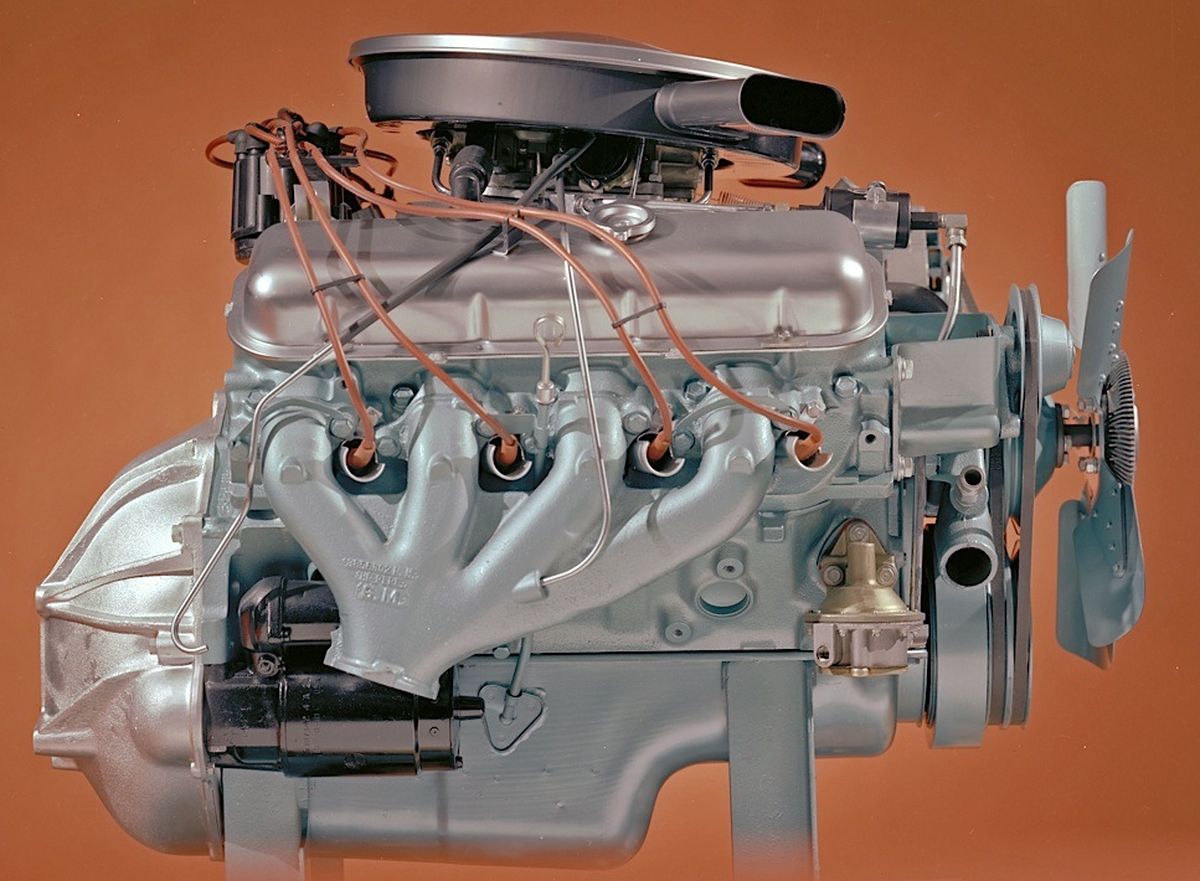
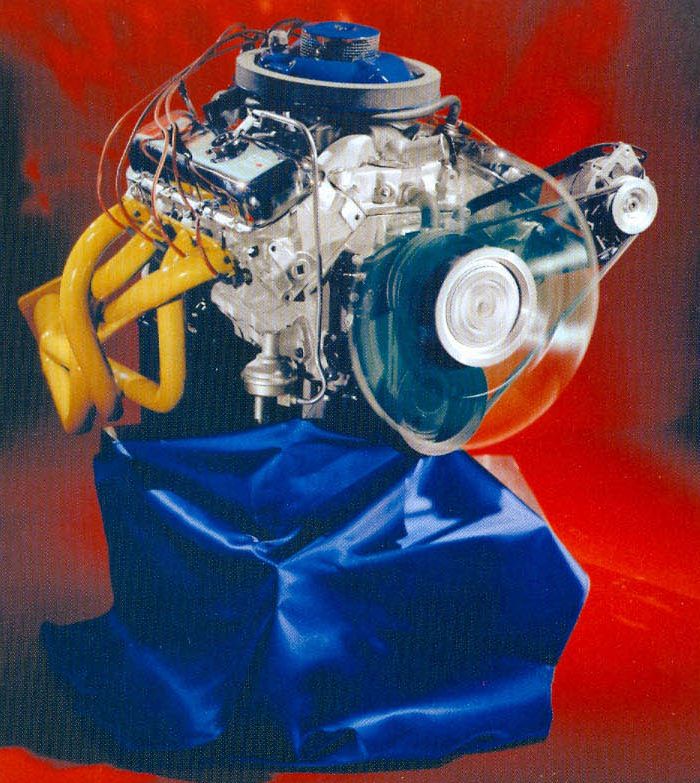

Based on ideas proposed by Corvair engine designer Robert Benzinger, a team consisting of Richard Keinath, Herbert Good, William Polkinghorne, Fred Frincke, Denny Wade, and Cal Davis began designing an engine with high-flowing heads as a priority over valvetrain packaging. Similar to the Mark II, the Mark IV used a so-called porcupine head with the staggered and canted valves operated by pushrods and stamped rocker arms, but it also used a stouter crankshaft and bottom end with larger bearing surfaces and four-bolt main caps for the more powerful versions. Chevrolet dubbed it the Turbo-Jet and introduced it in 1965, at first only as a 396-cubic-inch engine available in the Corvette, full-size cars (replacing the 409 partway through the model year), and the limited-edition Chevelle Z16.
For the following year, Chevrolet bored out the 396 to bring a 427 into the Mark IV family and began offering it in full-sizes and Corvettes. Though corporate edict forbade installing anything larger than 400 cubic inches in intermediates and compacts—and thus restricting the Chevelle to the 396 as a top engine—plenty of dealerships and tuners found success swapping 427s for 396s in Chevelles, Camaros and Novas throughout the late 1960s. That edict would come to an end in 1970, the peak of the muscle car era in Detroit, when Chevrolet bumped the Mark IV big-block to 454 cubic inches.
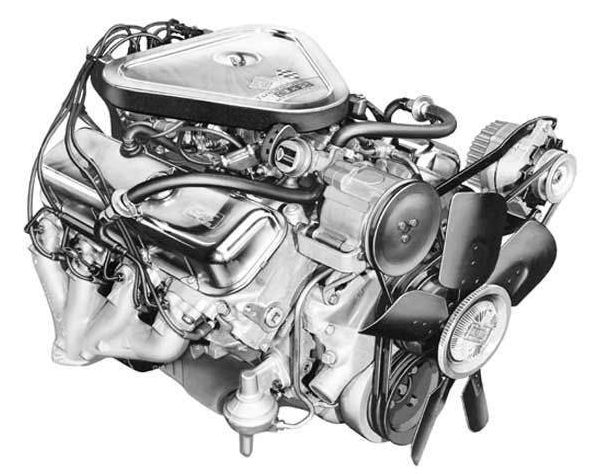
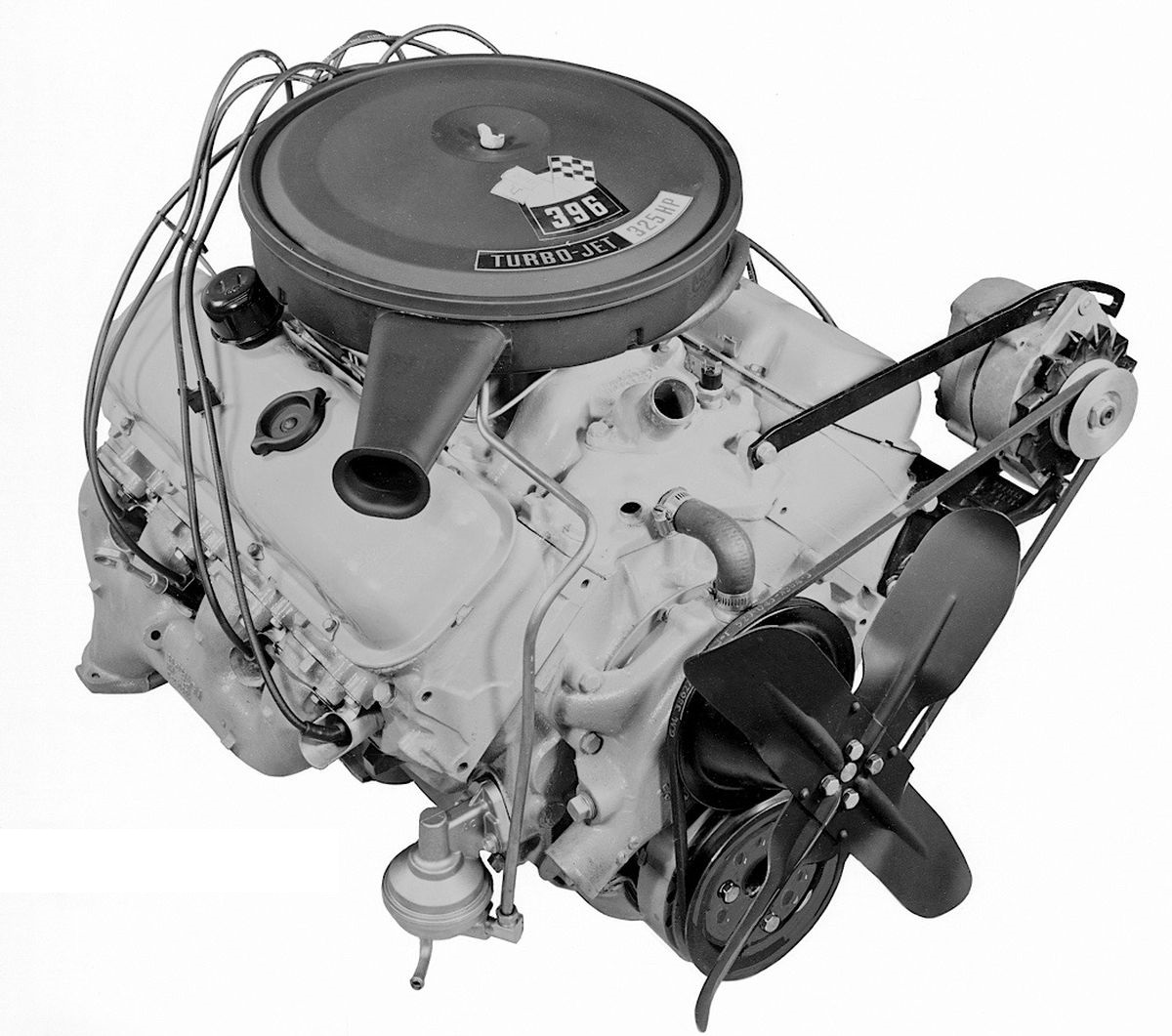
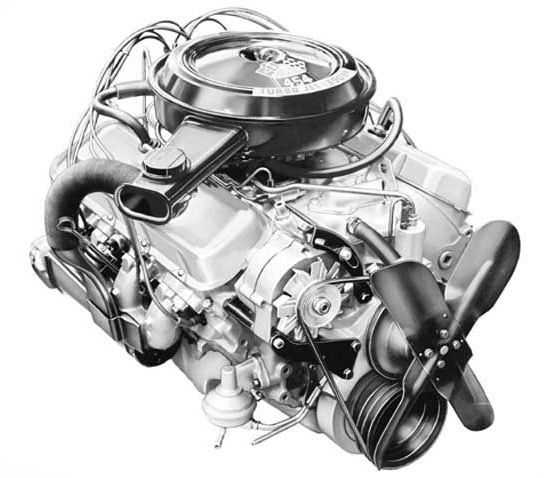

While muscle car fanatics know those three variants of the Mark IV—and their multitudinous designations: L78, L36, L88, L89, LS6, ZL1—by heart, Chevrolet also built a 402-cubic-inch version (a bored-out 396 offered from 1969 through 1972) and a 366-cubic-inch version (a tall-deck truck engine offered from the 1960s through the 1990s) as well as a 496-cubic-inch version (another truck engine offered from 2001 through 2009) and 502-cubic-inch and 572-cubic-inch versions (available only through GM’s performance parts catalog).
In passenger cars, the Mark IV lasted through 1976, but as indicated above, the Mark IV lived on afterward in both light-duty and heavy-duty trucks and vans, eventually incorporating a number of updates to become the Vortec 7400 and Vortec 8100 in 1996. Production continued until December 2009.
Like the small-block Chevrolet, the Mark IV big-block made its way under the hood of more than just Chevrolet and GMC products. A number of Can-Am cars, including the Chaparral 2F and McLaren M8 series, used 427s, as did the Iso Grifo 7-Litre, but perhaps the most widespread use of the Mark IV big-block V-8 (next to its use in boat and drag racing and in street rods) was in commercial applications, most notably powering transit buses, motorhomes, and even the Russian-built T-98 Kombat armored off-road vehicle.





.gif)


My favorite engine, the 427 big block Chevy, especially the L88.
“Though no longer in production (at least not for installation in new cars), the Mark IV big-block Chevrolet V-8 remains one of the most supported engines on the performance aftermarket and a staple of GM’s crate engine program ”
I think they forgot LS7 C5 Z28
I think it’s fascinating that high-performance versions of the BBC and some of the other popular engines of the era can be re-created from the catalogs of the many performance parts companies, with nary a GM-built block, head, intake, or rotating assembly in sight. Nearly 1000 hp of internal combustion fun is just a call or click away.
The aftermarket is why I recently sold off the last 454 I was hoarding. Always preferred small blocks as being more bang for the buck and I can still lift the blocks by myself!